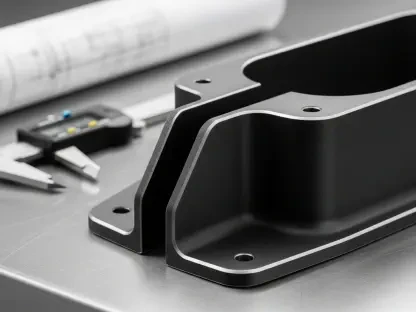What if the cost of reaching space could drop so dramatically that launches become as commonplace as airline flights? This bold idea isn’t just a dream—it’s the driving force behind a groundbreaking partnership between iRocket and Velo3D, two innovators in aerospace and manufacturing. Announced on October 24, this collaboration aims to transform reusable launch vehicles with cutting-edge technology, paving the way for frequent space missions and enhanced national defense capabilities. The stakes are high, and the potential impact is even higher.
The significance of this alliance lies in its promise to address some of the most pressing challenges in space exploration and security. With commercial spaceflight booming and geopolitical demands intensifying, the need for cost-effective, rapid-response launch systems has never been more critical. iRocket’s vision for reusable rockets, paired with Velo3D’s advanced additive manufacturing (AM), offers a solution that could redefine efficiency in the aerospace sector while strengthening the US industrial base. This story isn’t just about technology—it’s about reshaping the future of access to space.
A Bold Leap into Spaceflight’s Next Era
Picture a world where rockets lift off, return, and relaunch within 24 hours, mirroring the turnaround of a commercial jet. That’s the ambitious goal iRocket is chasing with its Shockwave vehicle, designed for full reusability. The partnership with Velo3D, a leader in AM technology, brings this vision closer to reality by enabling the creation of complex components that traditional manufacturing can’t achieve. Together, they’re not just building rockets—they’re crafting a new paradigm for space access.
This collaboration stands out because it tackles both commercial and defense needs simultaneously. The ability to rapidly recondition and relaunch vehicles could support high-frequency missions for satellite deployment or scientific research. Meanwhile, the same technology promises to bolster national security through faster production of critical defense hardware. It’s a dual-purpose approach that positions both companies at the forefront of a rapidly evolving industry.
Why Reusable Rockets and AM Are Critical Today
The demand for space access is skyrocketing, with private companies launching satellites at an unprecedented rate—over 2,500 were deployed globally in the past year alone, according to industry reports. Yet, the high cost and long lead times of traditional rocket systems remain a barrier. Reusable launch vehicles like Shockwave aim to cut expenses by up to 60%, making space more accessible. This is where AM plays a pivotal role, allowing for quicker design iterations and production of lightweight, high-performance parts.
Beyond economics, the geopolitical landscape adds urgency to this innovation. Rapid-response capabilities are essential for national defense, where delays in deploying systems can have serious consequences. By integrating Velo3D’s manufacturing solutions, iRocket can produce Solid Rocket Motors (SRMs) and other hardware faster, supporting the US military’s needs. This partnership isn’t just timely—it’s a strategic move to maintain a competitive edge in a tense global environment.
Moreover, the focus on domestic manufacturing addresses a broader concern: the erosion of the US industrial base. By leveraging AM, this collaboration helps reindustrialize key sectors, creating jobs and reducing reliance on foreign supply chains. The ripple effects could strengthen not only aerospace but also the broader economy over the coming years.
Inside the Game-Changing Collaboration
At the heart of this partnership is a fusion of expertise—iRocket’s reusable rocket technology meets Velo3D’s Sapphire AM systems. These machines allow for the creation of intricate propulsion components with geometries that push the boundaries of engineering. For Shockwave, this means enhanced performance and durability, critical for achieving the under-24-hour mission turnaround that iRocket targets with its “Recondition, Reload, and Relaunch” strategy.
Another key element is scalability. Velo3D’s Rapid Production Solutions (RPS) ensure that iRocket can move seamlessly from prototyping to full-scale production without sacrificing quality. This is vital for flight-critical hardware, where consistency can mean the difference between success and failure. Whether it’s a commercial launch or a defense contract, this capability positions the partnership to meet growing demand efficiently.
The defense applications add another layer of impact. Beyond spaceflight, the collaboration focuses on producing SRMs and other military hardware, directly supporting initiatives with the US Space Force and Air Force Research Laboratory. This dual focus—commercial innovation and national security—demonstrates how targeted technology partnerships can address multiple priorities at once, setting a new standard for versatility in the industry.
Voices Driving the Mission Forward
Leaders from both companies have voiced strong confidence in the potential of this alliance. Asad Malik, CEO of iRocket, highlighted the transformative nature of the technology, noting, “Velo3D’s solutions provide the precision and speed required to meet our aggressive goals, from rapid relaunches to critical defense projects.” This perspective underscores how AM is not just a tool but a catalyst for redefining operational limits.
Dr. Arun Jeldi, CEO of Velo3D, echoed this sentiment, emphasizing the importance of scalability. “Our Sapphire printers, integrated with RPS, allow iRocket to maintain high standards while ramping up production—a must for aerospace applications,” Jeldi explained. Such statements reflect a shared commitment to quality and innovation, crucial for hardware that must perform under extreme conditions.
Adding to the credibility, iRocket’s existing contracts with military entities and a planned $400 million SPAC merger to go public on NASDAQ in July next year, backed by billionaire industrialist Wilbur L. Ross, signal strong external validation. These milestones paint a picture of a partnership grounded in both technological promise and tangible progress, inspiring confidence across the industry.
Harnessing AM for Aerospace Breakthroughs
For those in the aerospace field—be it startups, established firms, or policymakers—there are clear lessons to draw from this collaboration. First, embracing AM offers unmatched design flexibility, enabling the creation of components that optimize performance in ways traditional methods cannot. This approach can be a game-changer for projects aiming to push technical boundaries.
Additionally, rapid prototyping should be a priority. Tools like Velo3D’s systems allow for quick testing and refinement, slashing development timelines significantly. This can accelerate innovation cycles, giving companies a competitive edge in a fast-moving sector. Scalability, too, must be factored in—solutions like RPS ensure that growth doesn’t compromise quality, a critical consideration for safety and reliability.
Finally, aligning with broader strategic goals is essential. Whether the focus is commercial expansion or defense readiness, partnering with technology providers can address industry-wide challenges, such as bolstering domestic production. These principles provide a blueprint for leveraging AM to drive efficiency and impact, no matter the scale of the endeavor.
Reflecting on a Historic Step Forward
Looking back, the alliance between iRocket and Velo3D marked a defining moment in the journey toward accessible spaceflight and robust national defense. Their combined efforts showcased how advanced manufacturing could solve long-standing challenges, from cost barriers to production delays. It was a testament to the power of collaboration in tackling complex problems with innovative solutions.
As the industry moved forward, the next steps became clear: wider adoption of reusable technologies and AM was necessary to sustain momentum. Stakeholders needed to invest in partnerships that prioritized scalability and strategic alignment, ensuring that both commercial and defense needs were met. This approach promised to keep the US at the forefront of aerospace advancements.
Beyond immediate gains, the broader implication was a call to reimagine industrial capabilities. Encouraging policies that supported domestic manufacturing and technological innovation was vital to maintain global leadership. The groundwork laid by this partnership offered a foundation to build upon, pointing toward a future where space access and security were no longer distant goals but everyday realities.









